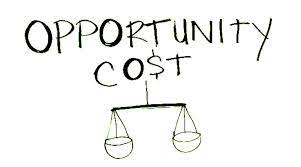Information technology Business Alignment
Introduction
Business process and information technology business alignment is paramount for organizations such as Capgemini as it determines the company’s flexibility as well as agility to transform and satisfy the emerging business needs. Therefore, it is important that Capgemini have reliable enterprise architecture that helps to unify the business and information technology concepts within the company.
This implies that enterprise architecture is vital for enhancing the company’s capabilities for innovation and information management in the present business environment that is highly demanding as well as complex by nature (Dijkman, Vanderfeesten, & Reijers, 2014).
As a result, enterprise architecture can be described as clearly defined application that determines analysis, planning, design and implementation of activities within the company through persistent holistic approach to develop and execute the specified strategy successfully. In light of this, it is necessary to recognize and appreciate the role of information technology business alignment and enterprise architecture and hence the preparation of this article.
Value of Information Technology Business Alignment
In response to the above requirement, it is important to recognize and understand significance of information technology business alignment in the enterprise architecture as Capgemini strives to accomplish the set goals. To start with information technology business alignment model is necessary as it ensures that the company objectives are in line with the requirement of information technology (Chiang & Nunez, 2012).
This is vital at Capgemini whereby the major goal is to help company clients realize the role of technology in enhancing the value of each business venture. Through proper information technology business alignment Capgemini as a company is able to develop technology based solutions that help its clients meet individual business objectives that fit into the technological requirements.
Secondly, another goal of Capgemini is to enhance client’s ability to transform their organizations through improved performance. This can be achieved through proper information technology business alignment because Capgemini is able to empower its clients react swiftly and instinctively to the constantly transforming market dynamics (White, 2015).
The company is focused at helping its clients harness the correct technology suitable for making its clients highly competitive and agile on the market. In other words, information technology business alignment strategy has enabled Capgemini to empower its clients to become change initiators on the market for proper performance.
Most importantly is the fact that proper information technology business alignment architecture facilitates high level of collaboration between the organization and other external parties. This means that Capgemini is able to undertake its operations in a reasonable manner by considering law enforcement authorities and its areas of jurisdiction (White, 2015). Through collaboration the company has been able to meet the expectations of its clients and hence referring to the approach as collaborative business experience.
Strategy for Aligning IT Portfolio
Research has revealed that there are so many enterprise architecture frameworks that any company might subscribe to depending on company concerns and guiding approaches to information technology within an organization. Tambouris, Zotou, Kalampokis, & Tarabanis, (2012) notes that there are three major enterprise architectures namely the Capgemini integrated architecture framework, the zachman framework and the Microsoft enterprise architecture.
This section examines the Capgemini integrated architecture framework (IAF) designed for analysis and development of project and enterprise level architectures. The starting point of implementing this strategy involves breaking down the general problem into various categories so that it is easier to resolve issue in each section independently.
In this case, Capgemini has categorized its system into business which entails people and processes, information that incorporates knowledge, technology infrastructure and information systems (Tambouris, Zotou, Kalampokis, & Tarabanis, 2012). These categories have facilitated easier governance and security structured into four major stages of abstraction namely conceptual, contextual, logical and physical.
The contextual level is designed to offer justification for the organization to undertake the suggested alignment models basing on the related environment. The conceptual stage helps in describing the requirements and the vision of the solution. The role of the logical view is to state how the solution and vision interact as well as their meeting point. The purpose of physical stage is to describe the artifacts of the solution so that other parties are able to recognize the role of the adopted alignment architecture (Steenkamp et al., 2013).
Through these stages it is easier to identify and recognize the reasons for implementing the suggested changes as well as anticipate the potential outcomes basing on the manner in which the vision and the solution coincide. It is evident that the integrated architecture framework developed and adopted by Capgemini helps to bring all business components with information technology requirements customized to suit the needs of specific organizations.
Value of Enterprise Architecture
Enterprise architecture is very important for any organization due to a number of advantages that comes with properly aligned business information technology system. Through enterprise architecture, the company is able to develop high value end to end models with full life cycle for software and system engineering, unified business and information technology systems as well as real time and embedded development.
Effective enterprise architecture is reliable for model design, analysis, test, implementation and maintenance (Seigerroth, 2011). This is supplemented by the fact that effective enterprise architecture increases systems speed, performance and stability. This implies that enterprise architecture is necessary for business simulation whereby suggested models can be transformed into functional units to understand the working of business systems.
This is achievable because enterprise architecture provides a platform for easy traceability, verification, impact analysis and validation of activities across the entire life cycle of models.
Enterprise architecture is vital for managing complexities through integration and interconnection of various structural as well as behavioral information systems. Through this alignment it enhances the company’s ability to produce reliable documents for effective information sharing within the company. Appropriate information sharing facilitates generation and reverse engineering within the company which are necessary for process reengineering such that the organization is able to satisfy market demands (Mezghani & Mezghani, 2014).
With dynamic transformations on the market, it is necessary that the company is able to visualize its applications an aspect that can be easily achieved through enterprise architecture. In case this if achieved it makes it easier for Capgemini to advance its model driven architecture for easier and customized operation within the company. In other words enterprise architecture is necessary for automation, database modeling, system simulation and effective project management.
Benefits of Enterprise Architecture
Business enterprise architecture has been pivotal at Capgemini as it has made it possible to identify and define business strategies, functions and process needs so that adequate application can be developed and linked with each of them. Through this, it is now easier to comprehend the requirements of information systems that can help in supporting each business activity hence facilitating adoption of goal achievement process through coordinated approach (Kurti, Barolli, & Sevrani, 2016).
On the other hand, information enterprise architecture has been essential in describing the manner in which the company has to undertake its operations and processes. Through this it is easier to coordinate the technological requirements with other types of information for proper governance and management.
Broadly, enterprise architecture has been helpful for resource allocation, process integration and wastage reduction in the company. This implies that the company is able to offer diversified services to diversified clients for satisfaction without being hindered by diversification aspects. In general terms, the integrated architecture framework adopted by Capgemini covers wider areas of application not only within the company but as required by its clients (Dijkman, Vanderfeesten, & Reijers, 2014).
The framework has proved to be powerful bearing in mind that it was established in 1990s based on experience acquired by practicing architects as they interacted with company clients. Since it is based on experience by Capgemini’s professionals, the architecture has undergone a series of evolutions to fit the real world experience as it encourages focusing on comprehension of business drivers and requirements.
Areas of Enterprise Architecture Improvement
It is high time that Capgemini reviewed its enterprise architecture system to enhance agility and efficiency. This is a necessity as the company will empower its clients with the ability to stay alert as well competent in the market despite the strong wave of technological transformations. This is necessary so that the company empowers its clients with the ability to counterattack the security attacks that might arise due to rapidly transforming technological aspects (Comuzzi, 2016).
This implies that the company needs to develop an e-governance system so that it is able to readily identify and rectify possible threats that its clients might fall victims. Through such improvements, it follows that the company has to expound in its architecture profession. This implies that the company should reshuffle its architecture such that they are able to consider the talent and individualized capabilities of its employees as well as the clients.
Most importantly is for the company to review its alignment and delivery system so as to cushion against the negative impacts of increasing complexities within company the systems. This must be supplemented by enhanced understanding and comprehension of the architectural structure not only to its employees but to the clients as well (Chiang & Nunez, 2012). In simple terms the architecture should be able to market itself by providing market leading solutions through adaption to specific company needs and expanding from individualized to organizational transformations.
Conclusion
In summary, it is evident that enterprise architecture is important for developing an effective and efficient information technology business alignment system within an organization. This is paramount for the company’s ability to accomplish the set goals especially in the current world whereby technology is taking over every aspect of company operations.
However, it is important that companies adopt specific informational technology strategy portfolios that coincide with the requirement of the system so that it is possible to satisfy company needs as well as the demands on the market. Having realized this, companies like Capgemini and Microsoft have developed customized enterprise architectural frameworks.
Through this custom framework it is easier for Capgemini to help its clients fit into the market by withstanding the current market waves as change initiators rather than becoming followers. The benefits of adopting this approach cannot be denied as they have unbearable benefits as highlighted above. However, it is vital that companies undertake constant assessment of their architecture so that appropriate improvements can be performed from time to time depending on the market situation.
References
Chiang, I. & Nunez, M. (2012). Strategic alignment and value maximization for IT project portfolios. Information Technology and Management, 14(2), 143-157. http://dx.doi.org/10.1007/s10799-012-0126-9.
Comuzzi, M. (2016). Alignment of process compliance and monitoring requirements in dynamic business collaborations. Enterprise Information Systems, 1-25. http://dx.doi.org/10.1080/17517575.2015.1135482.
Dijkman, R., Vanderfeesten, I., & Reijers, H. (2014). Business process architectures: overview, comparison and framework. Enterprise Information Systems, 10(2), 129-158. http://dx.doi.org/10.1080/17517575.2014.928951
Kurti, I., Barolli, E., & Sevrani, K. (2016). CRITICAL SUCCESS FACTORS FOR BUSINESS – ITS ALIGNMENT: A REVIEW OF CURRENT RESEARCH. Romanian Economic and Business Review, 8(3).
Mezghani, K. & Mezghani, L. (2014). Effects of Business Managers’ Skills on Enterprise Resources Planning Strategic Alignment. American Journal of Business and Management, 3(1). http://dx.doi.org/10.11634/216796061403518
Seigerroth, U. (2011). Enterprise Modeling and Enterprise Architecture. International Journal of IT/Business Alignment and Governance, 2(1), 16-34. http://dx.doi.org/10.4018/jitbag.2011010102
Steenkamp, A., Alawdah, A., Almasri, O., Gai, K., Khattab, N., & Swaby, C. (2013). Teaching Case Enterprise Architecture Specification Case Study. Journal of Information Systems Education, 24(2).
Tambouris, E., Zotou, M., Kalampokis, E., & Tarabanis, K. (2012). Fostering enterprise architecture education and training with the enterprise architecture competence framework. International Journal of Training and Development, 16(2), 128-136. http://dx.doi.org/10.1111/j.1468-2419.2012.00400.x
White, M. (2015). Critical success factors for enterprise search. Business Information Review, 32(2), 110-118. http://dx.doi.org/10.1177/0266382115589482
Want help to write your Essay or Assignments? Click here









